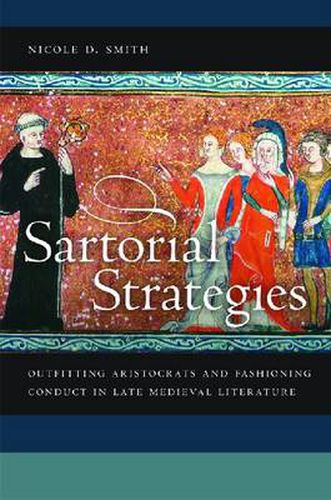Readings Newsletter
Become a Readings Member to make your shopping experience even easier.
Sign in or sign up for free!
You’re not far away from qualifying for FREE standard shipping within Australia
You’ve qualified for FREE standard shipping within Australia
The cart is loading…






Costume historians and literary critics have sharpened understandings of dress as it constructs bodies and identities, but none has considered how representations of clothing in medieval literature respond to clerical discourses that sought to regulate contemporary aristocratic fashion. In Sartorial Strategies: Outfitting Aristocrats and Fashioning Conduct in Late Medieval Literature, Nicole D. Smith establishes that writers of romances redirect the negative depictions of the courtly body found in clerical chronicles and penitential writings into positive images that convey virtue.
Smith structures her book around two key moments in fashion history: the transformation of expensive attire by lacing, knotting, and belting in the twelfth century and by form-fitting tailoring in the fourteenth. She selects two literary texts in French from the twelfth and thirteenth centuries-Marie de France’s Guigemar and Heldris of Cornualle’s Roman de Silence-and two in English from the fourteenth century-Sir Gawain and the Green Knight and Chaucer’s The Parson’s Tale-for analysis in light of these changes in fashion.
While religious and political documents decried the immorality inherent in sumptuous clothing and attempted to restrain the behavior of individuals wearing stylish garments, the literature selected by Smith reimagines fashion-savvy aristocrats as models of morally sound behavior in a pedagogical program advanced not by preachers but by poets. Smith argues that each poet responds directly to the accusations of religious narratives that luxurious garments hinder the soul. Smith also offers original readings of lesser-known penitential guides, such as the Clensyng of Mannes Sowle and the Memoriale Credencium, thus illustrating an extensive conversation between romance and penitential guides.
$9.00 standard shipping within Australia
FREE standard shipping within Australia for orders over $100.00
Express & International shipping calculated at checkout
Costume historians and literary critics have sharpened understandings of dress as it constructs bodies and identities, but none has considered how representations of clothing in medieval literature respond to clerical discourses that sought to regulate contemporary aristocratic fashion. In Sartorial Strategies: Outfitting Aristocrats and Fashioning Conduct in Late Medieval Literature, Nicole D. Smith establishes that writers of romances redirect the negative depictions of the courtly body found in clerical chronicles and penitential writings into positive images that convey virtue.
Smith structures her book around two key moments in fashion history: the transformation of expensive attire by lacing, knotting, and belting in the twelfth century and by form-fitting tailoring in the fourteenth. She selects two literary texts in French from the twelfth and thirteenth centuries-Marie de France’s Guigemar and Heldris of Cornualle’s Roman de Silence-and two in English from the fourteenth century-Sir Gawain and the Green Knight and Chaucer’s The Parson’s Tale-for analysis in light of these changes in fashion.
While religious and political documents decried the immorality inherent in sumptuous clothing and attempted to restrain the behavior of individuals wearing stylish garments, the literature selected by Smith reimagines fashion-savvy aristocrats as models of morally sound behavior in a pedagogical program advanced not by preachers but by poets. Smith argues that each poet responds directly to the accusations of religious narratives that luxurious garments hinder the soul. Smith also offers original readings of lesser-known penitential guides, such as the Clensyng of Mannes Sowle and the Memoriale Credencium, thus illustrating an extensive conversation between romance and penitential guides.